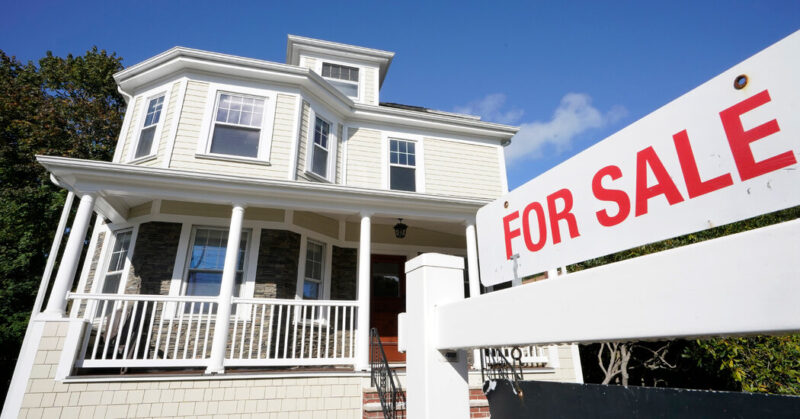The letter came from the state department of human services in July 2021. It expressed condolences for the loss of the recipient’s mother, who had died a few weeks earlier at 88.
Then it explained that the deceased had incurred a Medicaid debt of more than $77,000 and provided instructions on how to repay the money. “I was stunned,” said the woman’s 62-year-old daughter.
At first, she thought the letter might be some sort of scam. It wasn’t.
She asked not to be identified, because the case is unresolved and she doesn’t want to jeopardize her chances of getting the bill reduced. The New York Times has reviewed documentation substantiating her account.
The daughter moved into the family’s Midwestern home years earlier, when her widowed mother, who had vascular dementia, began to need assistance.
Her mother was well insured, with Medicare, a private supplemental “Medigap” policy and long-term care insurance. The only reason she enrolled in Medicaid was that she had signed up for a state program that allowed her daughter to receive modest payments for caregiving.
But that triggered additional monthly charges through a Medicaid managed care organization, and now the state wants that money back.
The practice dates to 1993, when Congress mandated that when Medicaid beneficiaries over age 55 have used long-term services, such as nursing homes or home care, states must try to recover those expenses from the beneficiaries’ estates after their deaths.
“Medicaid requires beneficiaries to spend down almost all their assets” to qualify for benefits, explained Eric Carlson, a directing attorney at Justice in Aging.
Most states allow those eligible for Medicaid to retain assets worth only $2,000. But if a beneficiary owns a home, it can be exempt.
Still, if Medicaid has paid for long-term care and there’s money to be had after death, state agencies will come for the assets.
“If there’s going to be tens of thousands of dollars available for recovery, in most cases, it’s the house,” Mr. Carlson said. Surviving family members may have to sell the house to repay Medicaid, as the Midwestern daughter may be forced to do, or the state may seize the property.
Medicaid “is the only public benefit program from the United States of America that requires states to seek to get money back,” said Representative Jan Schakowsky, Democrat of Illinois. This month she reintroduced a bill, the Stop Unfair Medicaid Recoveries Act, to end the practice.
Her staff has calculated that 17,000 families in Illinois alone have lost homes to Medicaid recovery since 2021. Comparable national figures aren’t available, but an independent agency that advises the federal government and states on Medicaid issues reported in 2021 that states collected $733 million through estate recovery in the fiscal year of 2019.
That amounts to only about one half of a percent of Medicaid’s long-term-care expenditures, according to the agency, MACPAC, the Medicaid and CHIP Payment and Access Commission. Only eight states collected more than 1 percent of expenditures.
“This is a really harmful and cruel program,” Ms. Schakowsky said. “And it’s not working. The cost of actually trying to get the money could exceed any money that would be returned.”
When Congress established the mandate, proponents argued that estate recovery would save money and promote fairness, since some higher-income seniors hired lawyers to help shield their assets so that Medicaid would pay their nursing home bills.
But for the most part, the states pursue claims against low-income families, many of them Black and Hispanic. Critics argue that the policy perpetuates poverty. The average wealth of deceased Medicaid recipients over age 65 is less than $45,000, the MACPAC report noted, and the average home equity is $27,364.
“For a lot of these people, the home is a product of a lifetime’s worth of working and scrimping,” Mr. Carlson said. “It could be a foundation for their children and grandchildren. That’s pulled away from the family under these claims. It imposes recovery against the families and communities least able to pay it.”
(A surviving spouse or minor or disabled child can continue to live in the house after a Medicaid beneficiary dies, but after the survivors die, or after a child turns 21, estate recovery can proceed.)
Every state offers hardship waivers that reduce claims, but “the process tends to be difficult or futile,” Mr. Carlson said. “Depending on the state, the request is almost always unsuccessful.”
“I don’t think estate recovery was a policy created primarily to impact low-income families, but that’s the impact it’s having,” said Natalie Kean, another directing attorney at Justice in Aging.
Estate recovery can also affect middle-class families, however. Many turn to Medicaid because, given the cost of nursing homes (the median price last year was $8,669 a month), “your savings can disappear in a hurry,” Mr. Carlson said.
Brian Snell, an elder law attorney in Marblehead, Mass., represents a family whose 93-year-old mother, who had dementia, died in 2022 at her condo in North Andover. Her daughter had cut back on her hours as a beautician to care for her at home, wanting to keep her out of a nursing home because “that was her mother’s wish,” Mr. Snell said.
When the mother qualified for MassHealth, the state Medicaid program, it enrolled her in a state home care program that provided home health aides (though only sporadically, because the pandemic made workers and agencies hesitant to enter homes).
After her death, MassHealth sought to recover $292,000 for the cost of home care and the program premiums. Because two of her children were low-income, including the caregiving daughter, a state waiver would allow those two to receive $50,000 each from the sale of the mother’s condo. But more than half of the $335,000 sales price will go to the state and federal governments.
The prospect of such clawbacks prevents some low-income older adults from receiving necessary care, even if they’re eligible.
“It’s not uncommon for people to simply decline to apply for Medicaid services once they learn about the recovery program,” said Matthew Portwood, an intake supervisor at the Atlanta Regional Commission, which serves as the local agency on aging, in an email. “Our counselors encounter this almost daily.”
Some states are working to reduce the financial hit on low-income families. Massachusetts, Georgia, South Carolina and Illinois, for instance, will not pursue recovery against estates valued below $25,000. Some states now provide applicants with fuller explanations of the consequences of signing up.
California allows hardship waivers for a “homestead of modest value,” defined as a market value of up to half the average price of homes in the county. MACPAC recommended amending federal law to allow states to make recovery optional.
Representative Schakowsky’s bill goes beyond that to prohibit Medicaid estate recovery altogether. “It’s just a terrible idea,” she said.
Her bill faces an uphill battle in the Republican-controlled House — all its 13 co-sponsors to date are Democrats — and it went nowhere when she introduced it last session. But the congresswoman remains optimistic: People in red states need long-term care, too.
Back in the Midwest, the daughter who was billed $77,000 still hopes to remain in the two-story house where she grew up, where her mother lived for more than 60 years and where “there’s a memory in every corner.” Now she is looking for a lawyer. “I have to fight this,” she said.





